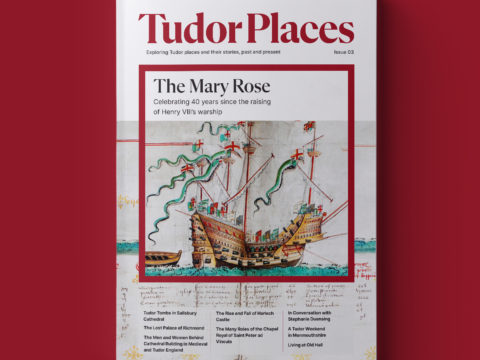Mary, Queen of France: Life Story
Chapter 13 : The King's Great Matter
In 1525, François was captured by Emperor Charles at the Battle of Pavia and held hostage. His mother, Louise of Savoy, acting as regent, and his sister Marguerite, sent letters to Mary, requesting her to intercede on his behalf.
Mary received the messenger, although she rebuked him, apparently as a joke, for not paying her sufficient deference as Queen-dowager of France. She read the letters from the French ladies and asked if the envoy had any more messages from them. He replied that he had not. Mary responded that she was surprised they had troubled to write, asking her help but ‘showing no grounds for it’.
After some further discussion, she told him that, although she would naturally like to help anyone who requested her aid, they had given her so few arguments in favour of François’ release, that she would not like to interfere, lest she do more harm than good. She gave him a second opportunity to explain why she should help, but he had no further arguments to make, and left her. The matter was reported in detail to Wolsey.
A few days after the visit of the French envoy to Mary, on 18th June 1525, her two-year-old son, Henry, was ennobled as Earl of Lincoln, alongside his cousin, Henry VIII’s illegitimate son, Henry Fitzroy, created Duke of Richmond and Somerset. Whilst Mary’s presence is not mentioned specifically, she probably attended – although Queen Katharine was not best pleased with the whole affair.
The French may well have regretted their poor record of paying Mary’s dower – although, in fairness, her abstraction of the Mirror of Naples was hardly a conciliatory act. Louise of Savoy tried hard to rectify the matter, in the hope of obtaining English support for the release of the French king. Payment of the arrears was included in the Treaty of the More, signed in August 1525.
Suffolk wrote a letter of thanks to Wolsey for his efforts. Of course, he and Mary would see little or nothing of it – the money was to go to Henry, as agreed in 1515.
The peace between England and France, was marked with court festivities. In May 1526, Henry gave a banquet for ‘the Queen, the French Queen, the Lady Princess, and the ambassadors of the Pope, the King of France and Venice’. The whole meal, including all the furnishing and candles, cost around £153.
François was eventually freed, and Mary, although she had not involved herself in the matter, wrote a letter of congratulation, signing herself ‘your good mother’ (she was step-mother to his wife). Suffolk too, wrote in joyous strains, promising his service to François, next only to Henry in his esteem.
Whilst the French royal family was rejoicing, the English one was in turmoil. Henry was beginning to entertain grave doubts about the validity of his marriage to Katharine. It may have been these questions that led Mary and Suffolk to request of the Pope a confirmation of the validity of their own marriage, which was granted in 1529. The concerns were related to Suffolk’s previous marriage to Margaret Mortimer, which had been annulled.
During 1528, Suffolk had been granted the wardship of nine-year-old Katherine Willoughby, who was (although the matter was disputed) Baroness Willoughby, d’Ereseby, and the daughter of Queen Katharine’s oldest friend. This was a valuable grant, as Suffolk could arrange the girl’s marriage, and draw an income from her estates until she married or reached her majority. The plan was for her to marry his and Mary’s son, the young Earl of Lincoln.
This profitable arrangement was followed up in May 1530 with an agreement with Margaret, Marchioness of Dorset, for the marriage of her son, Henry Grey, 3rd Marquis of Dorset, to Mary’s elder daughter, Lady Frances. The marriage eventually took place in 1533, and the couple's eldest child was Lady Jane Grey.
All of Mary’s biographers assert that she objected strongly to Henry’s attempts to oust Katharine, and that she particularly disliked Anne Boleyn. Whilst this seems extremely likely, given her relationship to Katharine, her likely feeling about royal blood, and the natural dislike of a woman who may have been her own maid-of-honour being exalted above her, there is no first-hand evidence of her thoughts.
The Imperial ambassador, Eustache Chapuys, wrote in 1531 that ‘Suffolk and his wife would, if they dared, offer all possible objections to this marriage’, and in 1532, another observer wrote of a fracas between Suffolk’s men, and those of the Duke of Norfolk. There had long been rivalry between the two, but the Venetian reporter attributed it to ‘opprobrious language uttered against Madame Anne, by His Majesty’s sister, the Duchess of Suffolk, Queen Dowager of France’.
True to her disapproval of Anne Boleyn, Mary declined to take part in the visit to Calais that Henry and Anne made in October 1532, pleading ill-health, which may well have been true, as well as a reflection of her reluctance to give countenance to the woman that Archduchess Marguerite referred to as ‘the King of England’s whore’. Suffolk accompanied the king – he was genuinely attached to Henry, as well as knowing his duty to him, and his complete dependence on the king’s good will – especially as Anne did not like him.
Mary, Queen of France
Family Tree


